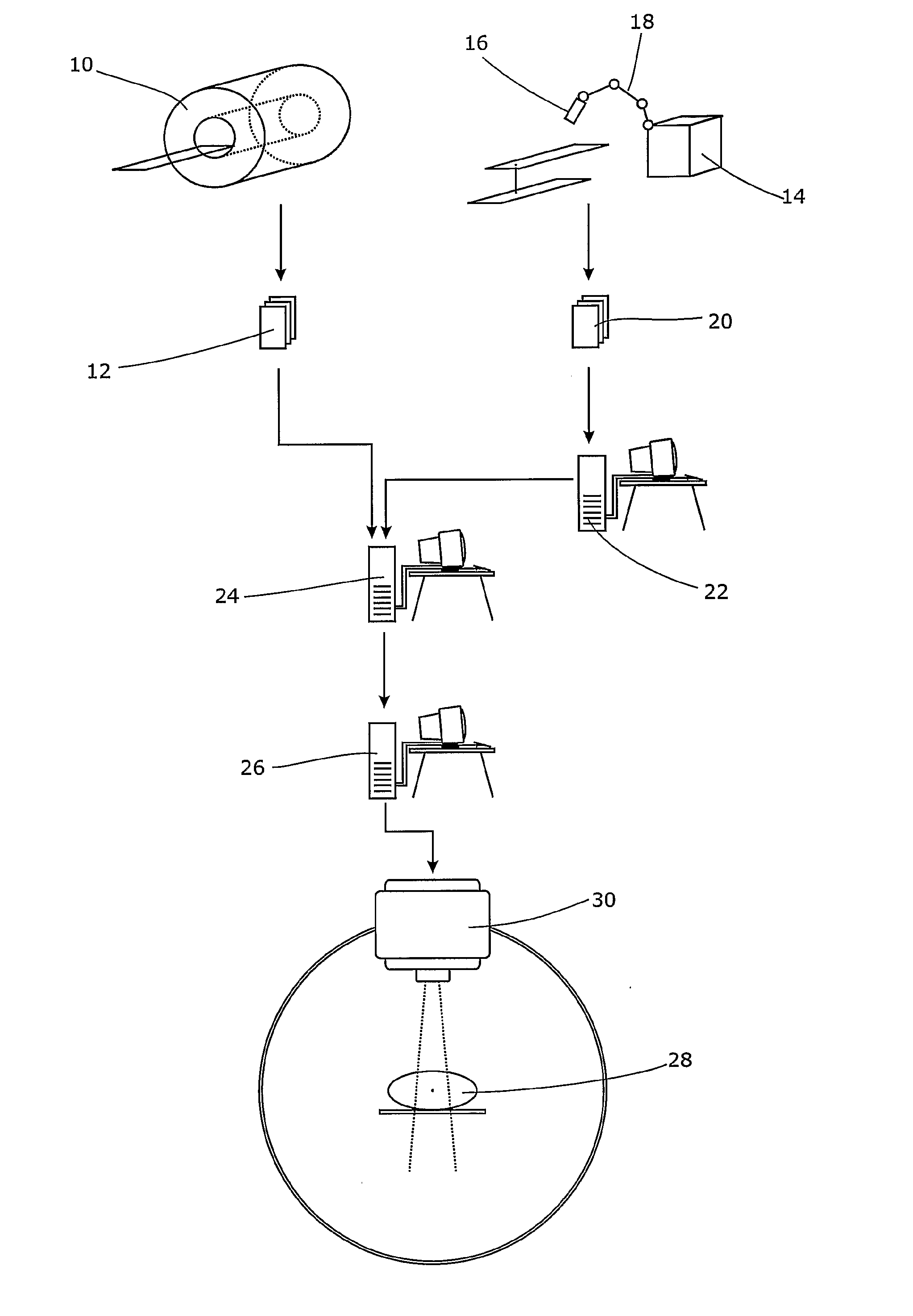Radiotherapeutic Apparatus
- Summary
- Abstract
- Description
- Claims
- Application Information
AI Technical Summary
Benefits of technology
Problems solved by technology
Method used
Image
Examples
Embodiment Construction
[0013]In technical terms, the solution could comprise (a) a three-dimensional, real-time motion tracking system; (b) an ultrasound device; (c) software for reconstruction of a three-dimensional ultrasound acquisition; (d) software for tissue classification; and (e) software for co-registering the classified three-dimensional sonographic acquisition with magnetic resonance images. The real-time motion tracking system provides the positions and orientations of the relevant part of the subject's body and of the ultrasound probe. The ultrasound device is used to interactively scan the volume of interest, the result of which is a volumetric reconstruction of the sonography. The volumetric reconstruction is subsequently classified such that density values comparable to those available from computerized tomography result. The classified volumetric reconstruction is finally co-registered with a magnetic resonance image set and used in place of a computerized tomogram as the basis of the dos...
PUM
 Login to View More
Login to View More Abstract
Description
Claims
Application Information
 Login to View More
Login to View More - R&D
- Intellectual Property
- Life Sciences
- Materials
- Tech Scout
- Unparalleled Data Quality
- Higher Quality Content
- 60% Fewer Hallucinations
Browse by: Latest US Patents, China's latest patents, Technical Efficacy Thesaurus, Application Domain, Technology Topic, Popular Technical Reports.
© 2025 PatSnap. All rights reserved.Legal|Privacy policy|Modern Slavery Act Transparency Statement|Sitemap|About US| Contact US: help@patsnap.com


